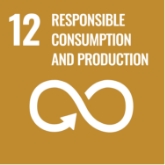

We placed an advertorial in the magazine Newsweek Japan and on the web highlighting trehalose's contribution to the conservation of cultural properties. In addition, the Newsweek Japan web features our alternative aged paste for repairing cultural artifacts made of Japanese paper.
Protection of Cultural Assets Using Trehalose
At the Matsuura City Archaeological Center in Nagasaki Prefecture, a sunken Mongolian warship in the late 13th century is salvaged and treated for conservation.
This preservation method, utilizing trehalose, has dramatically improved the conservation treatment of cultural properties. This article dives into the efforts that continue daily at the frontlines of cultural property protection research.
In addition, the conservation and treatment of archaeological iron objects is underway in Nagaoka City, Niigata Prefecture. Trehalose is also utilized in the conservation treatment of the huge iron shaft (4.3 m long and weighing approximately 4 tons) of the paddle steamer "Jundomaru," which was owned by the Edo Shogunate at the end of the Edo period. This treatment inhibits iron corrosion and prevents rusting.
Trehalose's effectiveness, work efficiency, and safety have been confirmed for the conservation of archaeological wood and iron objects. The "trehalose impregnation treatment method" is expected to significantly contribute to the future conservation of objects excavated from archaeological sites around the globe.
Newsweek Japan magazine
Publication date: March 26, 2024
Media: Newsweek Japan
Title: "The Power of Trehalose, Contributing to the Protection of Cultural Properties"*
Click here to view a PDF file of the article (in Japanese.)
*The title is a machine translation of the original.Newsweek Japan WEB
Not Just for Food? Functions and Potential of Trehalose, a Carbohydrate That Can Also Conserve Relics of Sunken Warships During the Mongolian Invasion**
**The title is a machine translation of the original. The article is available in Japanese only. For English translation, please use auto-translation on your browser.
Alternative Aged Paste, Material to Protect Cultural Artifacts Made of Japanese Paper
Aged paste is an essential adhesive for repairing cultural artifacts made of Japanese paper, such as hanging scrolls and other scrolls. It takes about ten years to manufacture, however, making it vulnerable to sudden needs.
In 2010, Nagase Viita developed an "alternative aged paste," which has almost the same functions as conventional paste and can be manufactured in a short period (about two weeks.) The article introduces its value and the story behind its development.
Newsweek Japan WEB
The Amazing "Alternative Aged Paste," a Material That Protects Cultural Artifacts made of Japanese Paper such as Hanging Scrolls**
**The title is a machine translation of the original. The article is available in Japanese only. For English translation, please use auto-translation on your browser.
